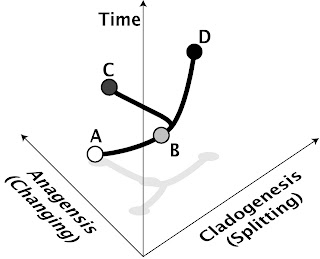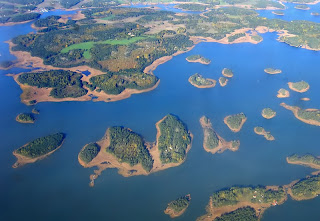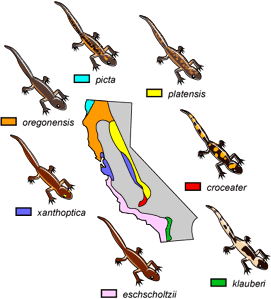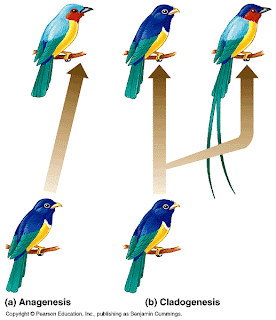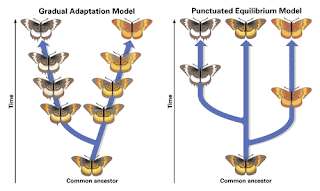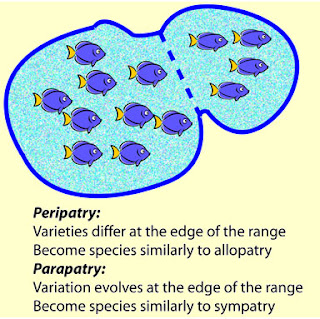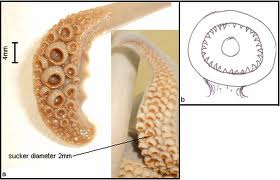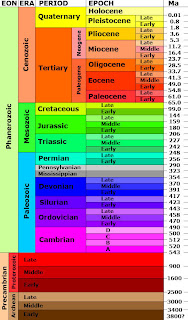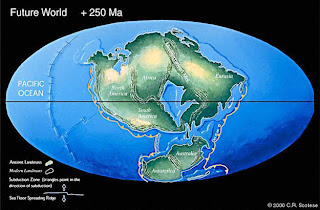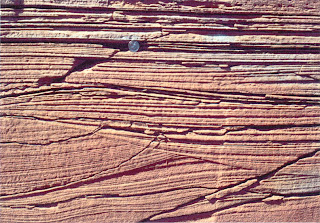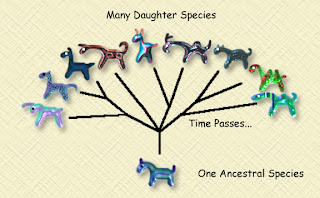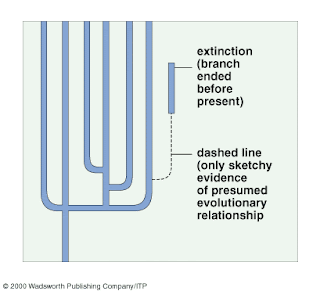allopatric speciation: Speciation model. A physical barrier arises, separates populations or subpopulations of a species, ends gene flow, and favors divergences that end in speciation.
anagenesis: Speciation pattern; changes in allele frequencies and morphology accumulate within an unbranched line of descent.
archipelago: Island chain some distance away from a continent.
biological species concept: Defines a species as one or more populations of individuals that are interbreeding under natural conditions, producing fertile offspring, and are isolated reproductively from other such populations.
cladogenesis: Speciation pattern in which a lineage splits and isolated populations undergo genetic divergence.
dosage compensation: Any mechanism that balances gene expression between the sexes during critical early stages of development.
evolutionary tree: Treelike diagram; a branch point means divergence from a shared ancestor and branches signify separate lines of descent.
extinction: Irrevocable loss of a species.
gene flow: Microevolutionary process; alleles enter and leave a population as an outcome of immigration and emigration, respectively.
genetic divergence: Gradual accumulation of differences in gene pools of populations or subpopulations of a species after a geographic barrier arises and separates them; thereafter, microevolution occurs independently in each.
gradual model of speciation: Idea that species arise by many small morphological changes that accumulate over great spans of time.
hybrid zone: Where adjoining populations are interbreeding and producing hybrid offspring.
mass extinction: Catastrophic event or phase in geologic time when entire families or other major groups are irrevocably lost.
parapatric speciation: Idea that neighboring populations can become distinct species while maintaining contact along a common border.
punctuation model of speciation: Idea that most morphological changes occur in a brief span when populations start to diverge; speciation is rapid, and the daughter species change little for the next 2-6 million years or so.
reproductive isolating mechanism: Heritable feature of body form, functioning, or behavior that prevents interbreeding between two or more genetically divergent populations.
speciation: The formation of a daughter species from a population or subpopulation of a parent species by way of microevolutionary processes. Routes vary in their details and duration.
species: One kind of organism. Of sexually reproducing organisms, one or more natural populations in which individuals are interbreeding and are reproductively isolated from other such groups.
sympatric speciation: A speciation event within the home range of an existing species, in the absence of a physical barrier. Such species may form instantaneously, as by polyploidy.

